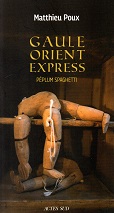Ronan Coghlan : The illustrated encyclopaedia of arthurian legends
Editions Element Books LtD. Shaftesbury. Dorset. 1991 / 1993
**************
AVALON.
The island to which Arthur was taken after his last battle, to be healed of his wound. Geoffrey calls it Avallo in the Historia and insula pomorum (island of apples) in the Vita Merlini. It is often seen as having a connection with apples because of the similarity of its name to various Celtic words denotinf that fruit : Old Irish aball, Middle Welsh afall, Middle Breton avallenn, Celtic avallo. It has also been connected with Avalloc, evidently originally a god who, according to William of Malmesbury, lived there with his daughters. The present form of the name may have been influenced by the Burgundian place name Avallon. One school of thought suggests that it comes from Irish oilean (island). It was perhaps originally a Celtic paradise. It was said to produce crops without cultivation, to be ruled by Guingamuer, Morgan's lover, or by a king named Bangon. In Perlesvaus, Guinevere and Loholt died before Arthur and were buried there. Avalon was the identified with Glastonbury, probably because Arthur's grave was supposely found at Glastonbury in the reign of Henry II and, as tradition had had him born away to Avalon, the two were considered the same. However, because of the firts syllabe in Glastonbury's name, some may have thought it identical with Caer Wydyr, the fort of Glass, another name for Annwfn. Another tradition claims that a man named Glast or Glasteing found his eignt-footed pigs here under an apple tree, and called it Insula Avalloniae.
Not all tales suggested that Avalon was identical with Glastonbury. According to Ogier le danois (a medieval french romance with some Arthurian content), it lay near the Earthly Paradise. In the Spanish medieval poem La Faula it seems to be considered an oriental isle, for the narrator tells how he was carried to the East on the back of a whale and arrived at an island where Arthur an Morgan were still alive.
That Avalon seems to have had o connection with the pagan Celtic religion is supporter by the fact that, in the Vita Merlini, Morgan is described as the chief of nine sisters living on the island - just like the nine Celtic priestesses able to turn into animals, heal the incurable and prophesy the future who lived on the Gaulish isle of Sena, according to the Roman writer Pomponius Mela. It is also noteworthy that, in Irish mythology, the name of the island over the seas belonging to the sea-god Manannan was Emhain Abhlach".
**************
J'ai respectﺣ۸ les italiques et les majuscules. Si vous y trouvez quelques co(q)uilles, n'hﺣ۸sitez pas ﺣ me les faire savoir.
J'apporterai une traduction en langue franﺣ۶aise un peu plus tard, ﺣ moins que quelqu'un veuille bien s'y mettre.
JC Even


